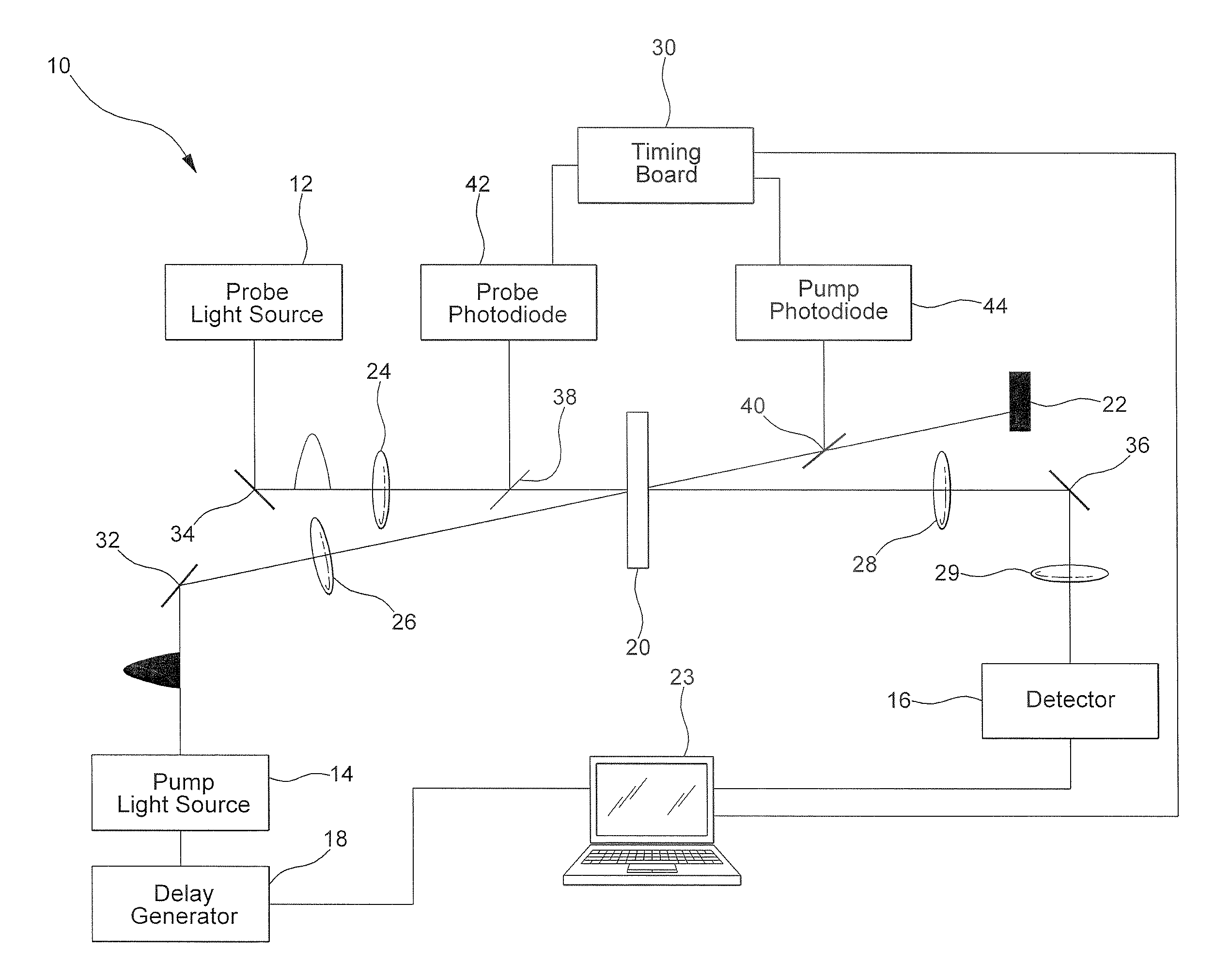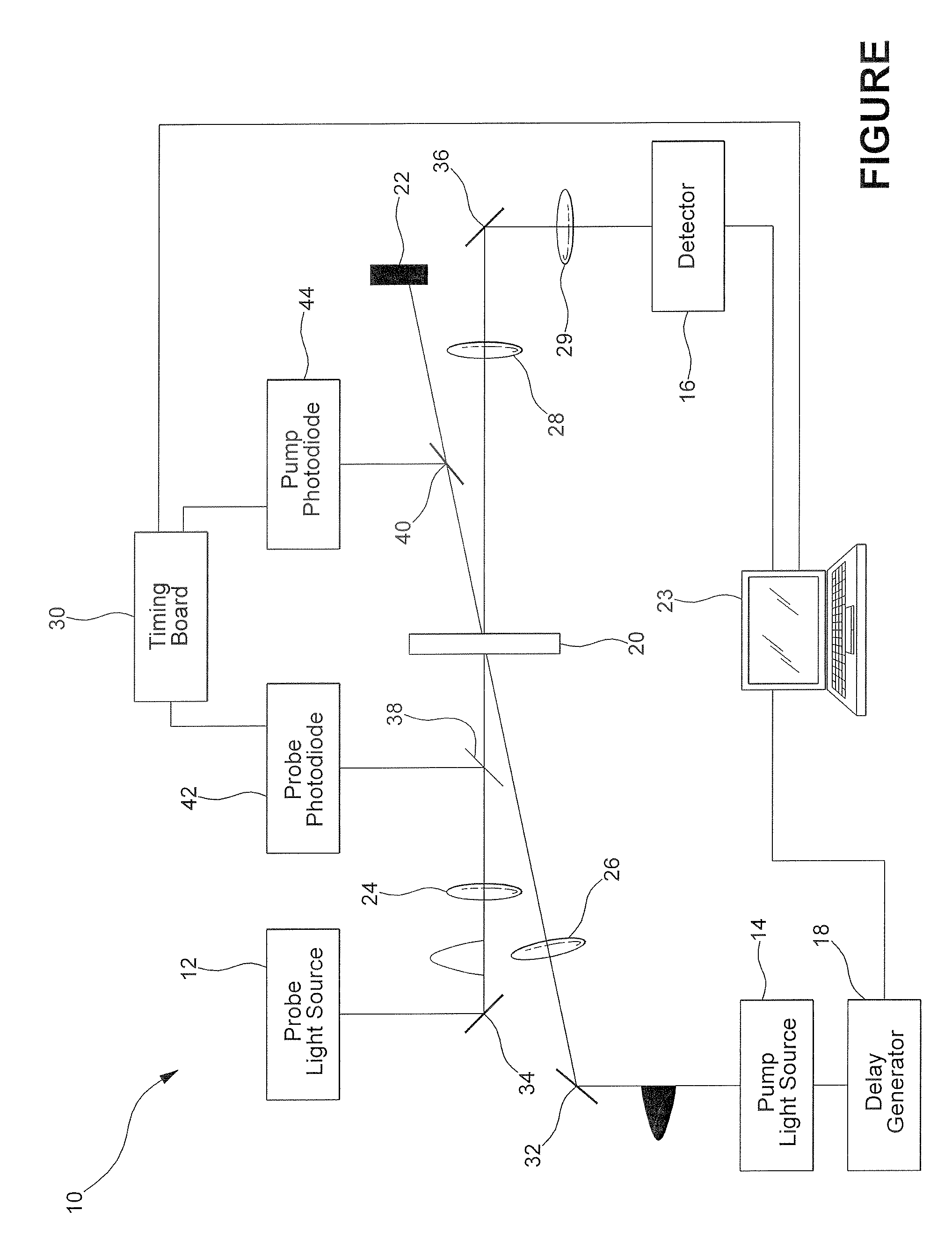Nanosecond flash photolysis system
a flash photolysis and nanosecond technology, applied in the field of laser flash photolysis, can solve the problems of reducing increasing the delay of the probe beam incrementally, and limiting the practical time scale in this case to several nanoseconds, so as to reduce the energy requirement of the pump light source and extend the time interval
- Summary
- Abstract
- Description
- Claims
- Application Information
AI Technical Summary
Benefits of technology
Problems solved by technology
Method used
Image
Examples
Embodiment Construction
[0015]Referring to the FIGURE, there is illustrated a LFP system 10 which includes a probe light source 12, a pump light source 14, a detector 16, and a delay generator 18.
[0016]The probe light source 12 shown is a photonic crystal fiber pumped by an appropriate laser. The probe light source 12 is adapted to be focused to areas as small as several square microns. It is understood that the probe light source 12 may be any conventional probe light source that is adapted to be focused to areas as small as several square microns such as a Q-switched sub-nanosecond microchip pulsed laser coupled to a photonic fiber, for example.
[0017]The pump light source 14 is typically a laser adapted to produce a collimated beam with an energy level of at least several microjoules and referred to as an excitation light source. The pump light source 14 may be an amplified femtosecond laser, a picosecond laser, a Q-switched nanosecond laser, a dye laser, a nitrogen laser, or a nanosecond microchip laser...
PUM
 Login to View More
Login to View More Abstract
Description
Claims
Application Information
 Login to View More
Login to View More - R&D
- Intellectual Property
- Life Sciences
- Materials
- Tech Scout
- Unparalleled Data Quality
- Higher Quality Content
- 60% Fewer Hallucinations
Browse by: Latest US Patents, China's latest patents, Technical Efficacy Thesaurus, Application Domain, Technology Topic, Popular Technical Reports.
© 2025 PatSnap. All rights reserved.Legal|Privacy policy|Modern Slavery Act Transparency Statement|Sitemap|About US| Contact US: help@patsnap.com


